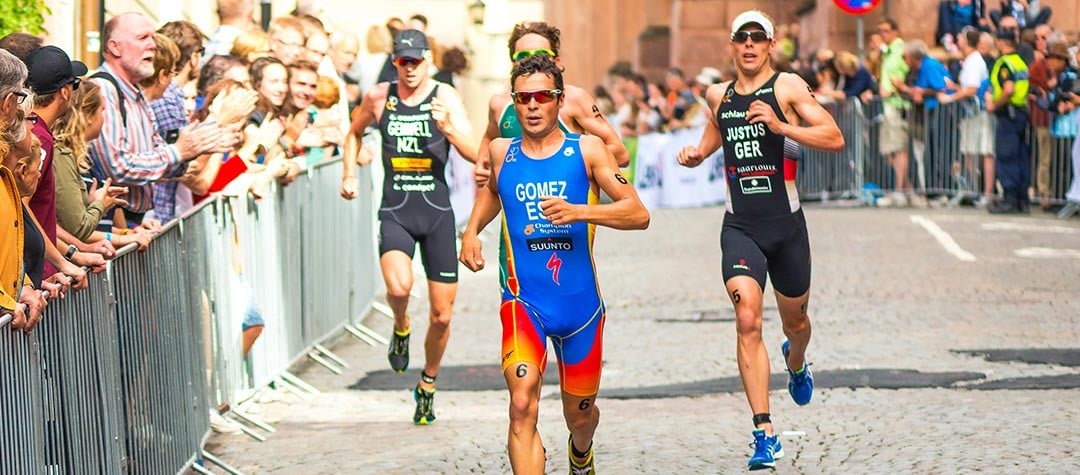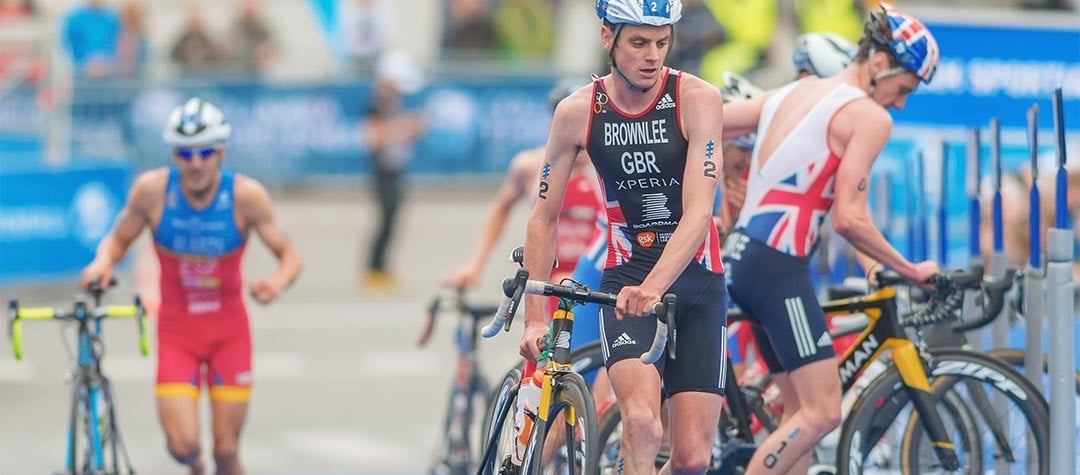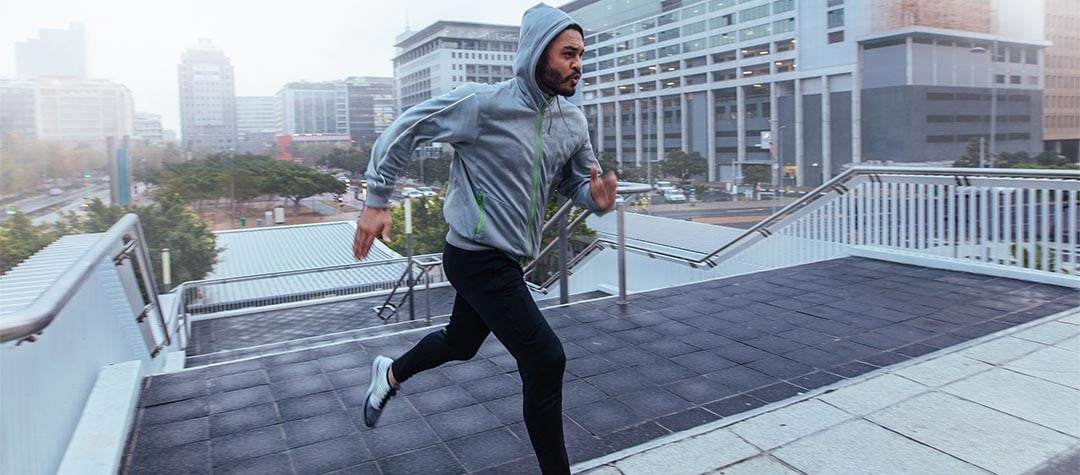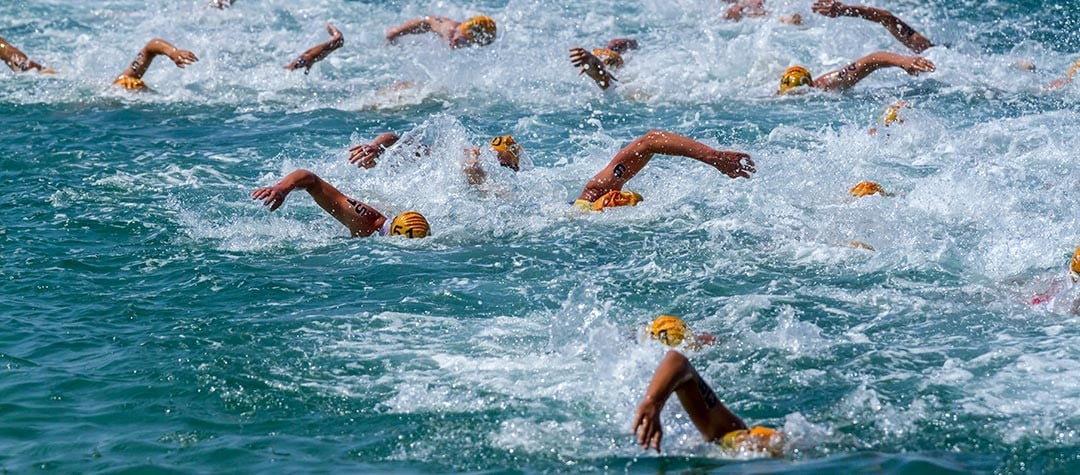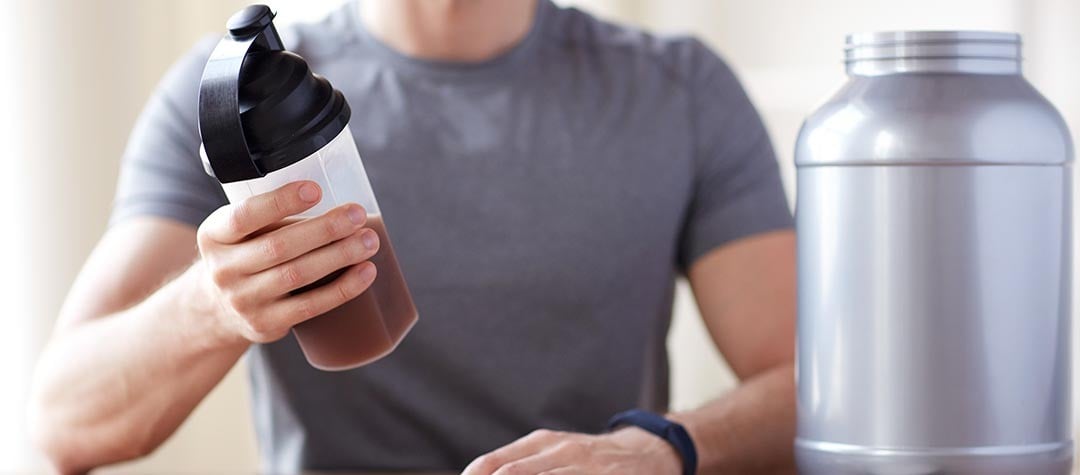Tips for kit, training, cycling, running, swimming and transition for beginner triathlon athletes.
Whether you’re a seasoned triathlon expert or a complete novice, our top 20 triathlon tips will help you get more from your swimming, cycling and running performance.
Triathlon kit tips...
1. Footwear
However well you dry your feet after the swim, they will still be damp, which makes putting socks and shoes on difficult. To help get your feet into your footwear, sprinkle talcum powder into your socks and shoes and you’ll save time struggling in the triathlon transitions.
2. Sunglasses
Invest in some running — or cycling-specific — sunglasses. They can keep flies out of your eyes, sharpen your vision in low light conditions and block road glare.
3. Lycra
For triathlons, Lycra is your friend. Choose close-fitting Lycra kit to avoid chafing between the thighs so that you will be comfortable for the cycling and running disciplines. Lycra kit doesn’t hold water — so wearing it under your wetsuit means you’ll save time in the first transition.
4. Laces
Lace locks and elastic laces are a great help when trying to put your feet into your trainers as fast as possible. Rather than wasting time tightening laces and tying bows, simply push your feet in, slip the lace lock into position and you’re off. As a very low cost, it’s money well spent — and they will save you hassle and valuable time in your triathlon racing.
5. Number belts
Another great time-saver is a number belt. For cycling you need your number on your back, whereas for running you need it on your front. Rather than reverse garments or even swapping the number, simply swivel the belt around your body in T2 (Transition two) and you’ll be ready to run.
Triathlon training tip...
6. Back-to-back sessions
These sessios are the best way to train your body to cope with the demands of changing from swimming to cycling or cycling to running. Known as ‘brick’ sessions, where you complete two disciplines directly after each other, practicing bricks in training will make you a lot better come triathlon race day.
Triathlon swimming tips…
7. Removing your wetsuit
Wetsuits are difficult to remove at the best of times — and even more so when you are hurrying to save valuable seconds in a triathlon. To help removal after your swim, liberally apply Vaseline before the race to areas such as under the arms and the legs, so that your wetsuit will slide off with ease. Vaseline will also help guard against chafing problems.
8. Swimming coaching
Of the three triathlon disciplines, swimming is by far the most technical. A good swimming technician will always outshine a cardiovascular specialist, so it will pay dividends to invest in some professional swimming coaching to improve your stroke and get the best performance from your swim stage.
9. Open water swimming
If your swim is in open water, try to practice beforehand in a lake or the sea. Open water swimming is very different to pool swimming, requiring a more upright position — and you will benefit from getting used to the extra buoyancy that a wetsuit provides, which will also affect your swimming position.
Triathlon cycling tips...
10. Low gear, high cadence biking
The bike-to-run transition typically plays havoc with your legs as you adjust to the different demands on your body. To make the change-over easier, in the last mile of the bike course you should select a lower gear and spin your legs at a higher cadence (number of revolutions per minute). Lessening the load in the last stretch of the cycle section will help your legs adjust to the new demands of the running section of the triathlon.
11. Focus on cycling
If you’re short of training time, focus particularly on cycling, because of all three triathlon disciplines it is the one where you can make up the most time. The cycle section is always the longest, so any percentage improvement in this section will carve a greater chunk off your time than the same percentage improvement in swimming or running.
12. Avoid over-fatigue when cycling
At the beginning of the cycling leg, avoid pushing too high a gear, as this would over-fatigue your legs in the latter stages of the cycle course. Instead, choose a slightly lower gear and maintain a high cadence while you settle into your natural rhythm.
13. Eat and drink during cycling
The cycling leg is an ideal time to refuel and hydrate. In addition to fluid replacement, tape easy to eat foods such as an energy bar or a banana to your top tube or handlebars, ready for instant use.
14. Don’t go ‘drafting’
‘Drafting’ refers to riding with your front wheel a few inches from the rear wheel of the competitor in front. It can significantly cut down wind resistance and the energy that you expend — but is unfortunately against the rules in most events and can lead to your disqualification. The last thing you want after all your preparation is to be disqualified, so always avoid drafting. You should also make sure overtaking maneuvers are completed within 15 seconds.
15. Carry a puncture repair kit when cycling
A flat tire can occur at any time — and the worst time is in a race. Make sure that you carry a few basic puncture repairing tools in a pouch underneath your saddle, so that if disaster strikes, you can salvage something from your event.
Triathlon running tip...
16. Short stride at the beginning
At the start of the run section, your legs can often feel heavy after cycling — so begin with a shorter stride than usual, then gradually adjust as your body gets used to the new discipline.
Triathlon transition tips...
17. Prepare for transitions
T1 and T2 (swim-to-bike and bike-to-run changeovers) are where valuable time can be won and lost. Lay a clean towel next to your bike and carefully lay out your kit in the order that you’ll put it on, so that changing is easy when you’re rushing between disciplines.
18. Transition training
Your transition technique, clothing changes, strategy and speed are all areas that you can improve upon with practice. Include transition training as part of your overall training program until your personal system is firmly embedded and a completely automatic process. A little practice can bring a three-and-a-half-minute changeover down to just 60 seconds — which is much simpler than making up that time on the bike or running.
19. Mark your bike
Finding your bike amongst hundreds of others when you’re in a hurry can be tricky and you can easily enter the wrong bike aisle and lose valuable time. To avoid this, take note of a landmark near the bike so you’ll be able to find it easily in the mayhem of the transition.
20. Know your triathlon route
Forewarned is forearmed. Before the race, take a look at the transition entrance and exit from the directions you will be approaching and leaving them. Knowing your route can save you wrong turns and wasted time — so make sure you check everything out beforehand.
Picture credit - Hans Christiansson / Shutterstock.com











